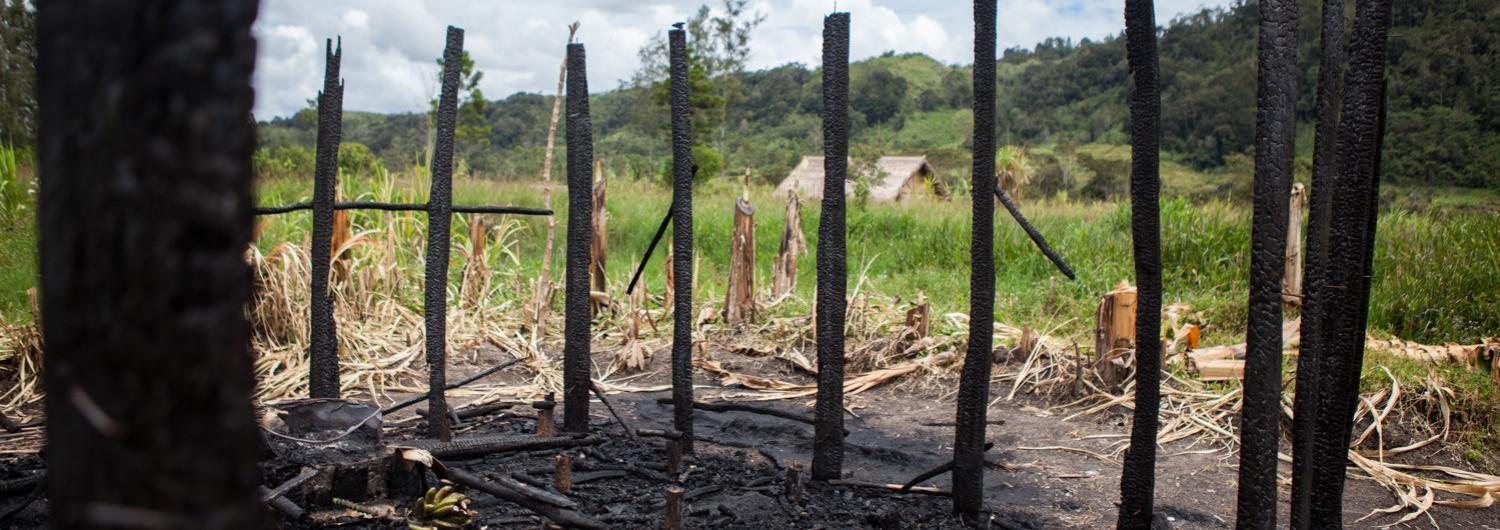As Papua New Guinea’s general elections approach, observers of the country are watching closely for signs the polls will trigger conflict, particularly in the volatile Highlands. This is understandable, given the pattern discernible from previous elections. But this narrative – of polling plunging PNG into violence – ignores a bigger picture: fighting is already widespread in the Highlands. At any one time, dozens of tribal conflicts are active in the region – heedless of democracy’s five-year timetable. And there are worrying signs that they have become more destructive than ever.
As anyone with a passing familiarity of PNG will attest, tribal fighting is nothing new. Hundreds of years ago it was common throughout the Pacific. In places like Fiji and coastal PNG, waves of colonisation and proselytising led it to die out long ago. In the PNG Highlands, which outsiders had scarcely visited until the 1930s, it never went away. Tribal fights, sparked by disputes over 'land, women and pigs', as locals like to say, continue to bedevil swathes of the region, particularly in the resource-rich westerly provinces of Hela and Enga.
The extent of the phenomenon is hard to quantify. Reliable statistics simply do not exist, and the difficulty and expense of travelling to the hinterlands of this mountainous country mean the media does not have the means to report on the phenomenon with any rigour. Indeed, editors in Port Moresby appear reluctant to put their reporters at risk to cover this sadly commonplace phenomenon.
One incident – in the village of Ragu in Southern Highlands Province – did attract the media’s attention. Back in the early hours of 11 November, 2013, as a tribal fight was underway, a grenade was thrown into a haus man (man’s house) in which dozens of women and children were sheltering. The building burst into flames, incinerating most of those inside. The entire village was torched. Many of those who escaped the flames were set upon by men with machetes. Some 36 people died in the attack – an atrocity unusual in its scale and barbarity. But it was nevertheless emblematic of two trends: the proliferation of modern weaponry, and the erosion of the traditional rules governing tribal conflict.
The sheer diversity of the Highlands region makes sketching the 'traditional rules' tricky, since customs vary from region to region. However, many of the principles formerly observed bear a resemblance to those codified in international humanitarian law – the law of armed conflict. For example, gratuitous killing was usually avoided, if only for the reason that it invited retaliation in kind. One principle, noted in the ICRC publication 'Under The Protection of the Palm', held that 'a decent man' should not 'try to kill the wives and children of the 'brothers’ who oppose them; in particular, they should not set fire to women’s houses in order to incinerate occupants.'
Such principles were handed down from generation to generation in ceremonial meeting places – the haus man and haus meri (women’s house). This traditional form of education no longer exists, and limits to tribal conflict do not feature on the curriculum offered in PNG’s contemporary school system. A generation of young people is growing up amid conflict without rules.
In a recent trip to the Highlands to document the humanitarian consequences of tribal fights, an ICRC communications team was told repeatedly that the rules had changed. Fighters in Hela Province calmly explained that they 'killed women and children like pigs'. We heard reports of the shooting of pastors, of the decapitation of small children – things that would have been unthinkable a generation ago. The ICRC is working to promote a stripped-down version of the rules that apply during armed conflict in the Highlands: a moratorium on the targeting of non-combatants, health facilities and other public infrastructure. This might be thought of as a return to older principles.
The grenade attack also pointed to the proliferation of serious weaponry. Traditionally fought with bows and arrows and spears, tribal fighting’s destructiveness was limited. No longer: automatic weapons make mass killing easy. The government is well aware of this and has taken steps to address it, including through the recent guns amnesty, or 'Call-out' operation, in Hela province. But while plenty of homemade guns were surrendered, there was little sign of the high-powered military-grade weapons also known to have found their way into the country.
Taken in aggregate, tribal fighting presents a deeply concerning humanitarian picture in parts of the Highlands. There are hundreds of victims and thousands of displacements every year. Whole communities are forced off land and into dependency on allied clans. Crops and livelihoods are destroyed. Displaced women, returning to their gardens for food, are raped by enemy clansmen. Schools are forced to close. Children miss out on education for months on end. Clinics are destroyed or abandoned by health workers unwilling to put themselves at risk. Countless lives are put on hold. If all this sounds familiar, it should: this is war, albeit on a small scale.
The problem is not confined to the areas where the fighting takes place. What happens in the Highlands does not stay in the Highlands. A simple phone call can result in an attack on a member of a targeted clan living hundreds of miles away. Life becomes harder in swathes of the country, leading migrants to move to cities like Port Moresby and Lae, where they find themselves in ramshackle settlements without jobs. Crime follows. Needless to say, this is not merely a humanitarian problem, but a development problem too.
Australia spends half a billion dollars on aid to PNG – money aimed at turning its closest neighbour into a stable and prosperous partner. So long as parts of the country are disfigured by tribal conflict, this objective will remain very tough to attain.

